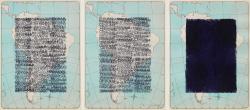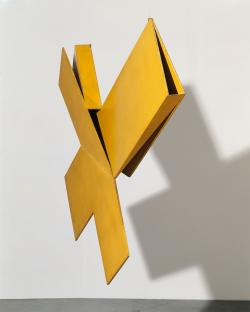After leaving Rio de Janeiro late in 1966, Antonio Dias increasingly engaged with the making of objects, he took part in public interventions and happenings, and experimented with video and other media. But painting nevertheless remained his mainstay—or, more precisely, he invented it as such.
In some remarkable shots taken in 1970 during his solo show at the Milanese gallery Studio Marconi, a blurred Antonio Dias is caught mid-air, with his body curled and entirely framed by the white monochrome middle panel of Project for “The Body” (1970). The indistinct cement floor of the gallery barely registers the panel’s rather drastic foreshortening, contrived by photographer Giorgio Colombo probably in order to keep the 6-meter rectangular triptych from deforming too much. In any case, this is why Dias’s elevation from the floor seems so absurd. One might well doubt that his body physically belongs to the surrounding architectural space—couldn’t this be an image imprinted onto the white panel instead?
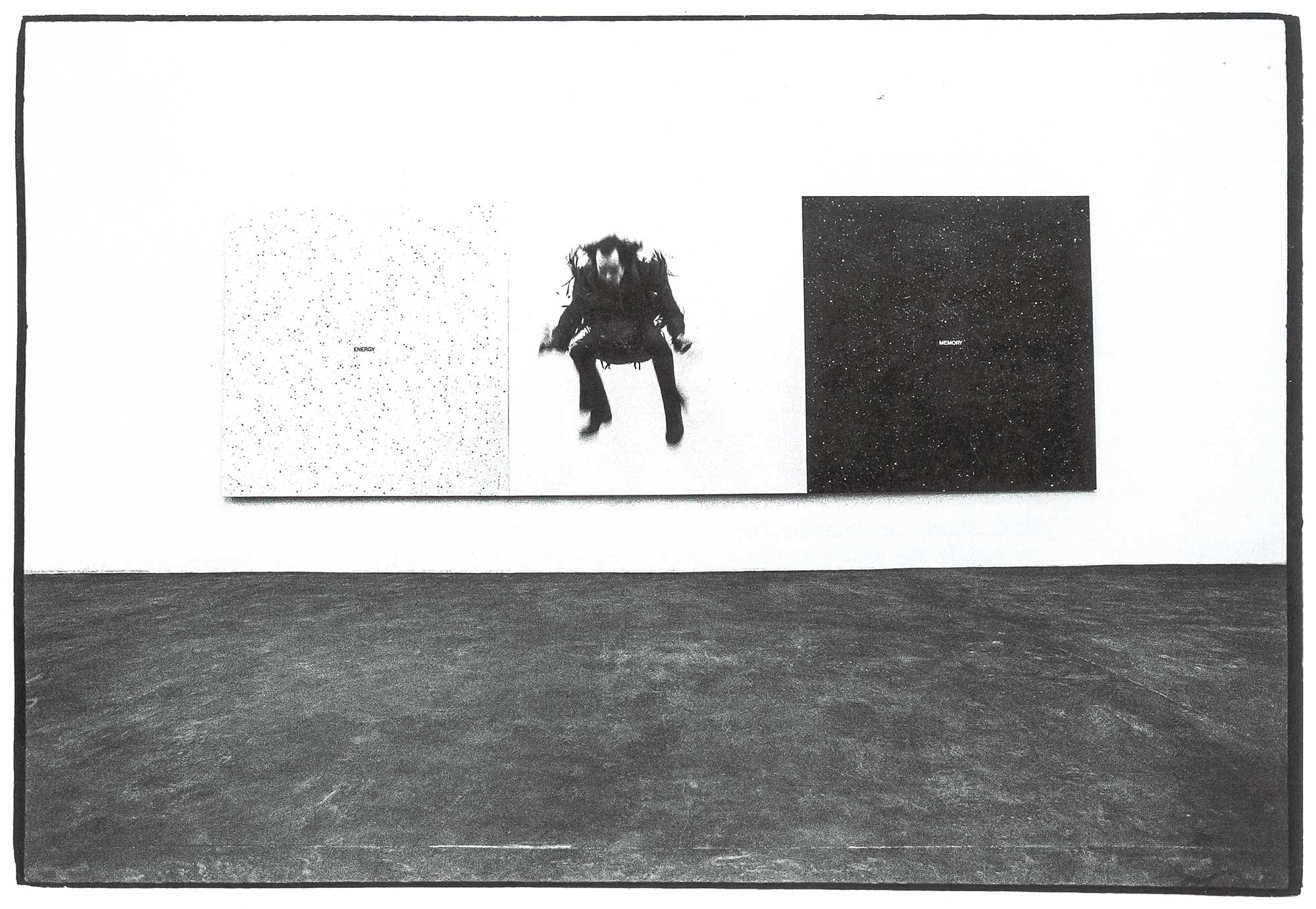
On the one hand, the performative thrust behind the images recalls the kind of Nouveau Réalisme antics that Dias was certainly familiar with—think of Yves Klein’s Le Saut dans le Vide (1960, Leap into the Void)—albeit with a deadpan quality that was a far cry from Klein’s self-aggrandizing extravaganzas. Dias’s blurry and crouched figure seems mostly devoid of authorial, conceptual, or ritual authority—it actually borders on the beastly, with the fringes of his western-style jacket resembling the fur of some devilish-looking animal. On the other hand, the photos can also be read as a parody of the anthropomorphic proportionality of so many Arte Povera works. Giuseppe Penone’s La mia altezza, la lunghezza delle mie braccia, il mio spessore in un ruscello (1968, My Height, the Length of My Arms, My Breadth in a Stream), Alighiero Boetti’s Catasta (1966, Stack), or Luciano Fabro’s In Cubo (1966, In Cube) may serve as examples. All of these are based directly on the height and wingspan of their makers (or of selected individuals, as in the case of the tailor-made version of In Cubo Fabro produced for critic Carla Lonzi). Such contemporary variations on the theme of the Vitruvian Man are undoubtedly apposite for considering a painting entitled Project for “The Body”.
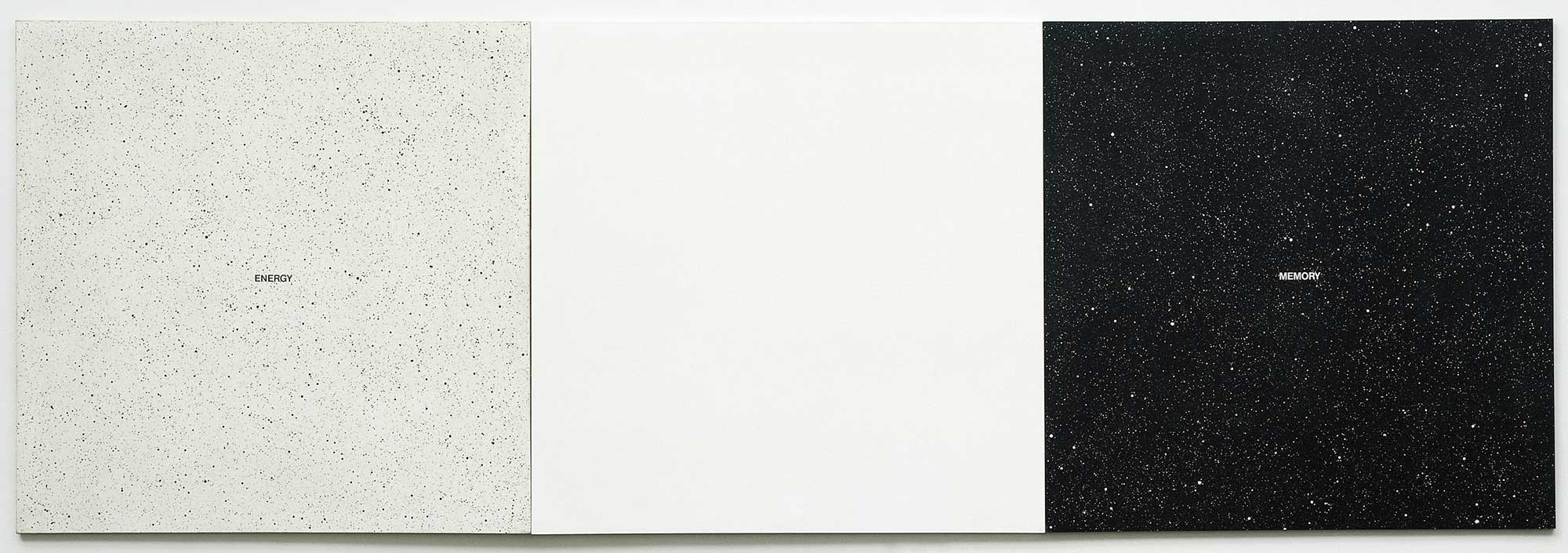
This brings me to the issue of painting per se, which is indeed an odd medium in view of the emerging material and technical repertoire of Conceptual Art, even though the works of other artists such as Giulio Paolini show that Dias was not alone. In fact, he was by no means exclusively a painter. During the brief period he lived in Paris after leaving Rio de Janeiro late in 1966, Dias increasingly engaged with the making of objects. Moving to Milan in 1968, he joined critic Tommaso Trini’s short-lived group Art Terminal and took part in public interventions and happenings, not to mention his continuous experimentation with video and other media throughout the 1970s. But painting nevertheless remained his mainstay—or, more precisely, he invented it as such. In 1968, Dias conceived Project-book – 10 plans for open projects, an artist’s book that, as its title suggests, contains plans for propositions and environmental “monuments” originally meant to be built at different scales. However, with the notable exception of Do It Yourself: Freedom Territory (1968), the projects remained unbuilt, just as the book would remain unpublished until 1977 (Trama). Unbuilt, however, is not unmade: some of Dias’s key paintings, such as Anywhere Is My Land (1968), actually had their motifs drawn from Project-book. Was painting then simply another possibility of realizing a project, or a “probject”, as Dias was fond of calling his plans?
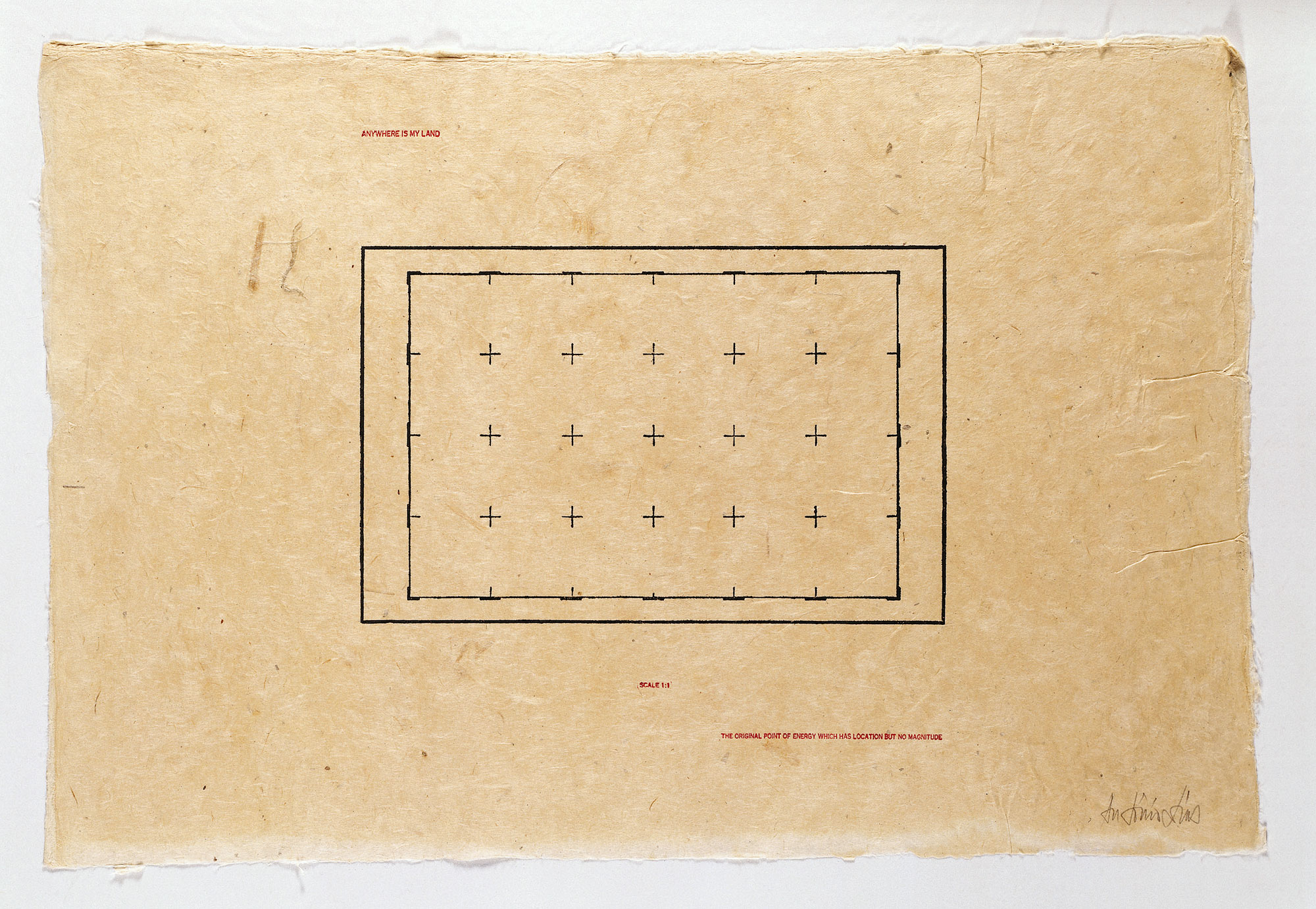
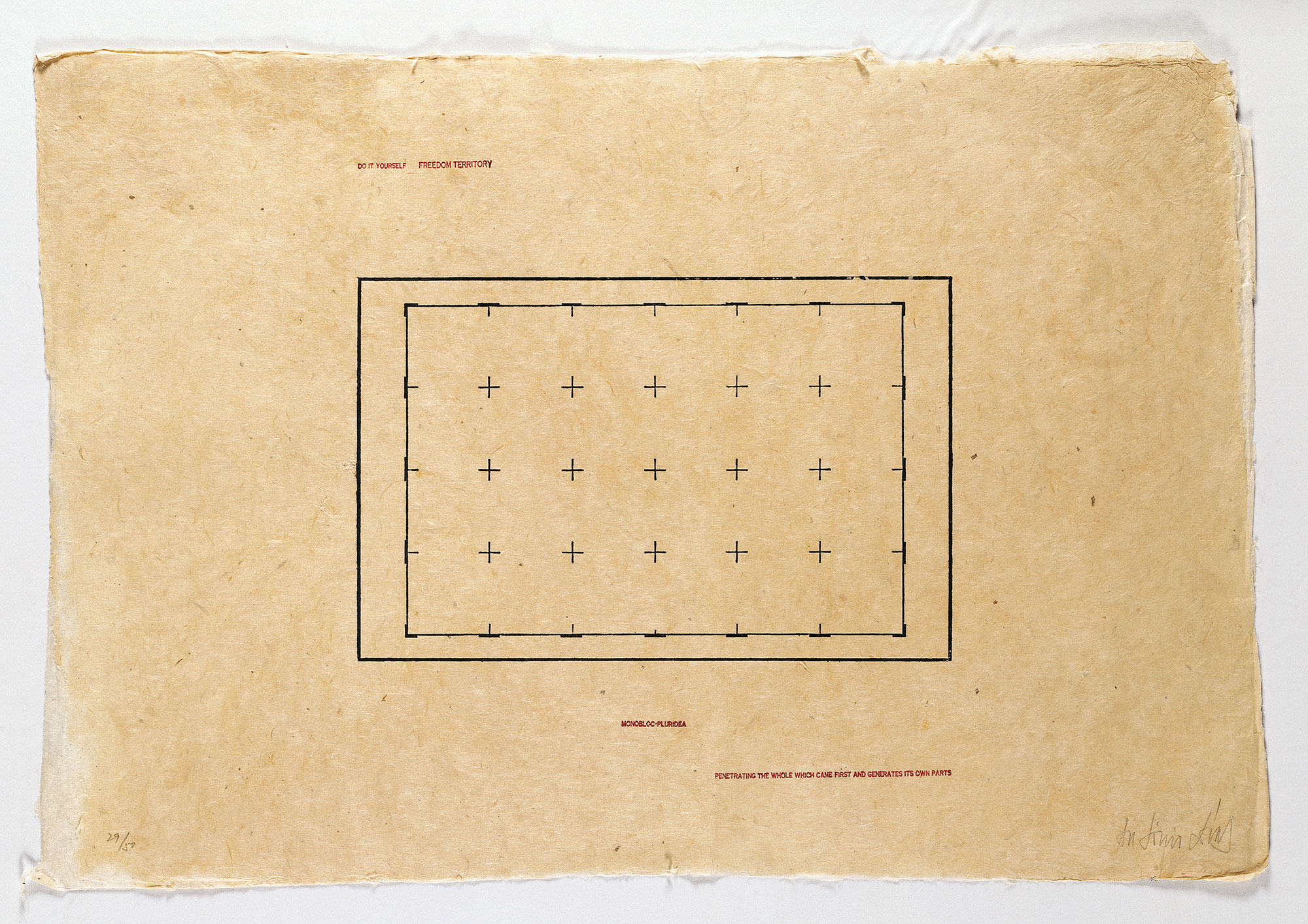
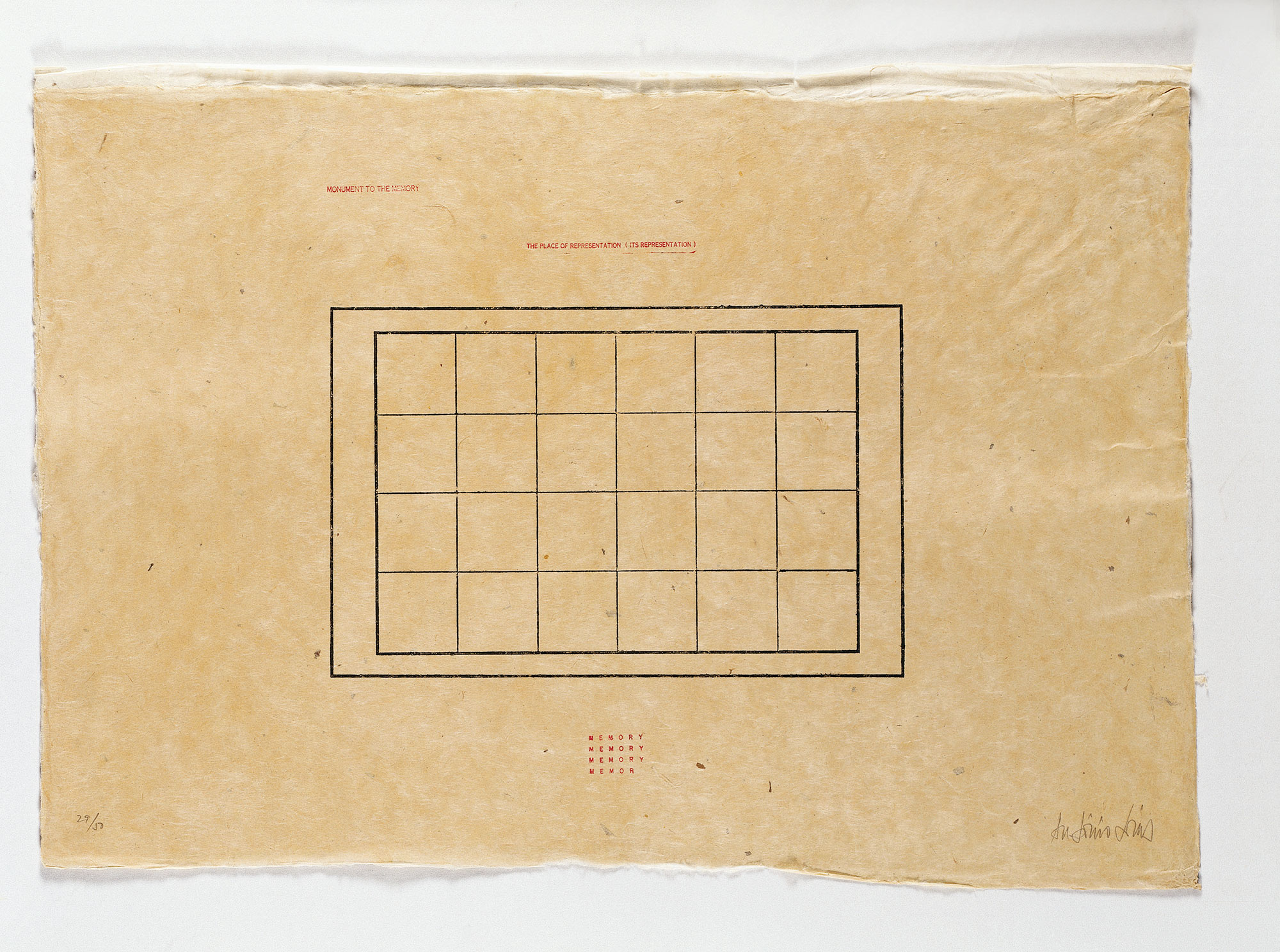
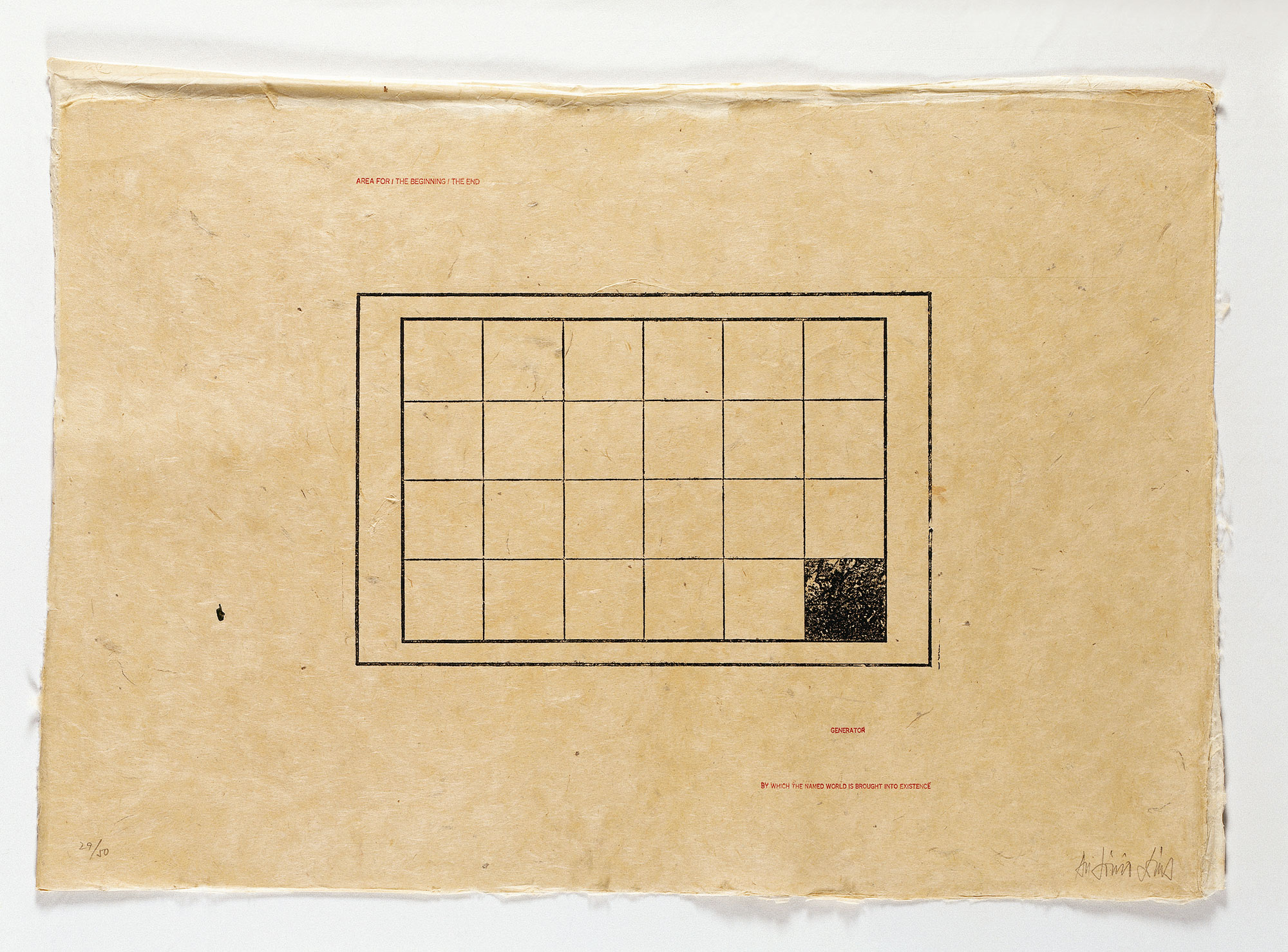
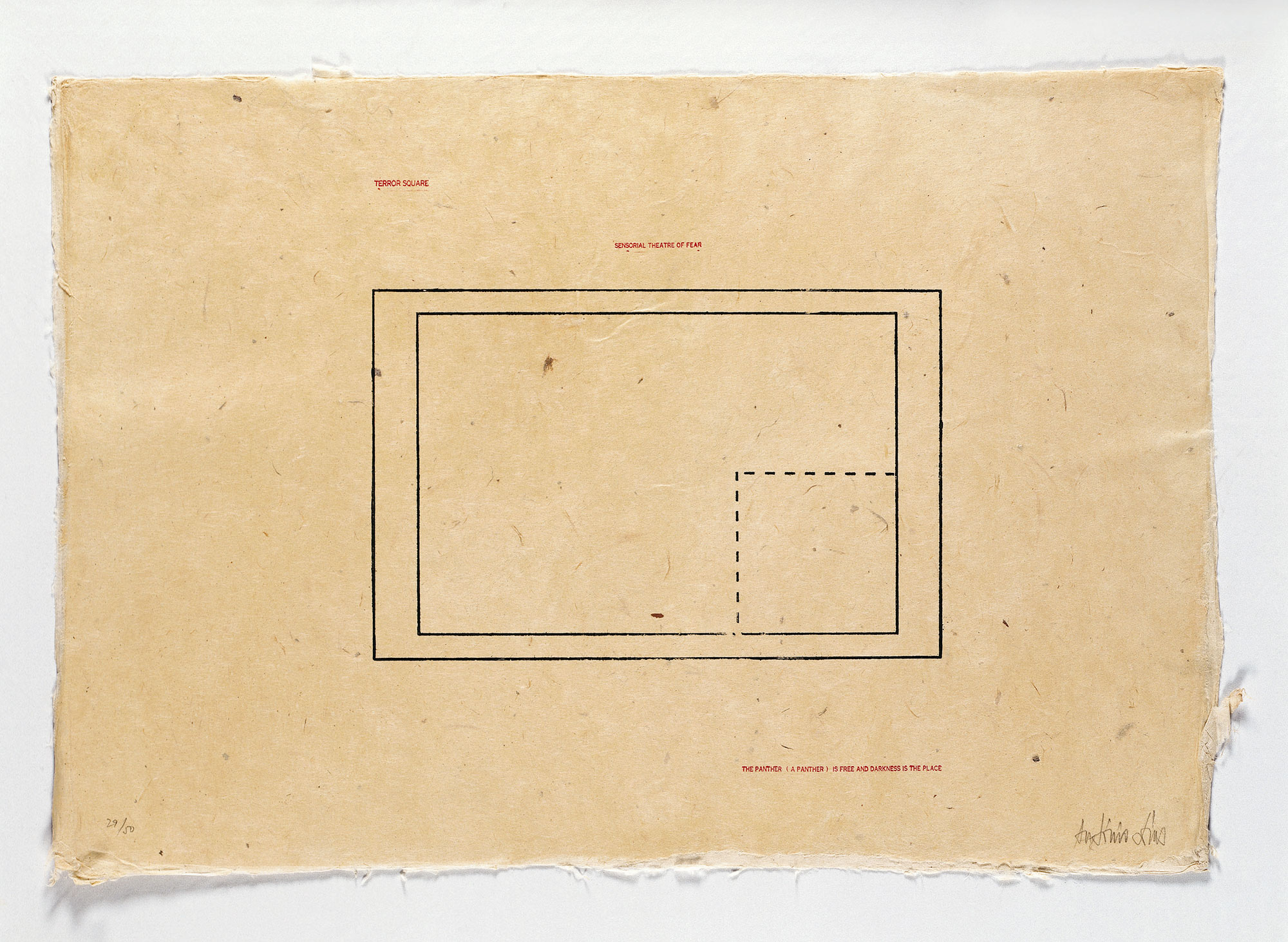
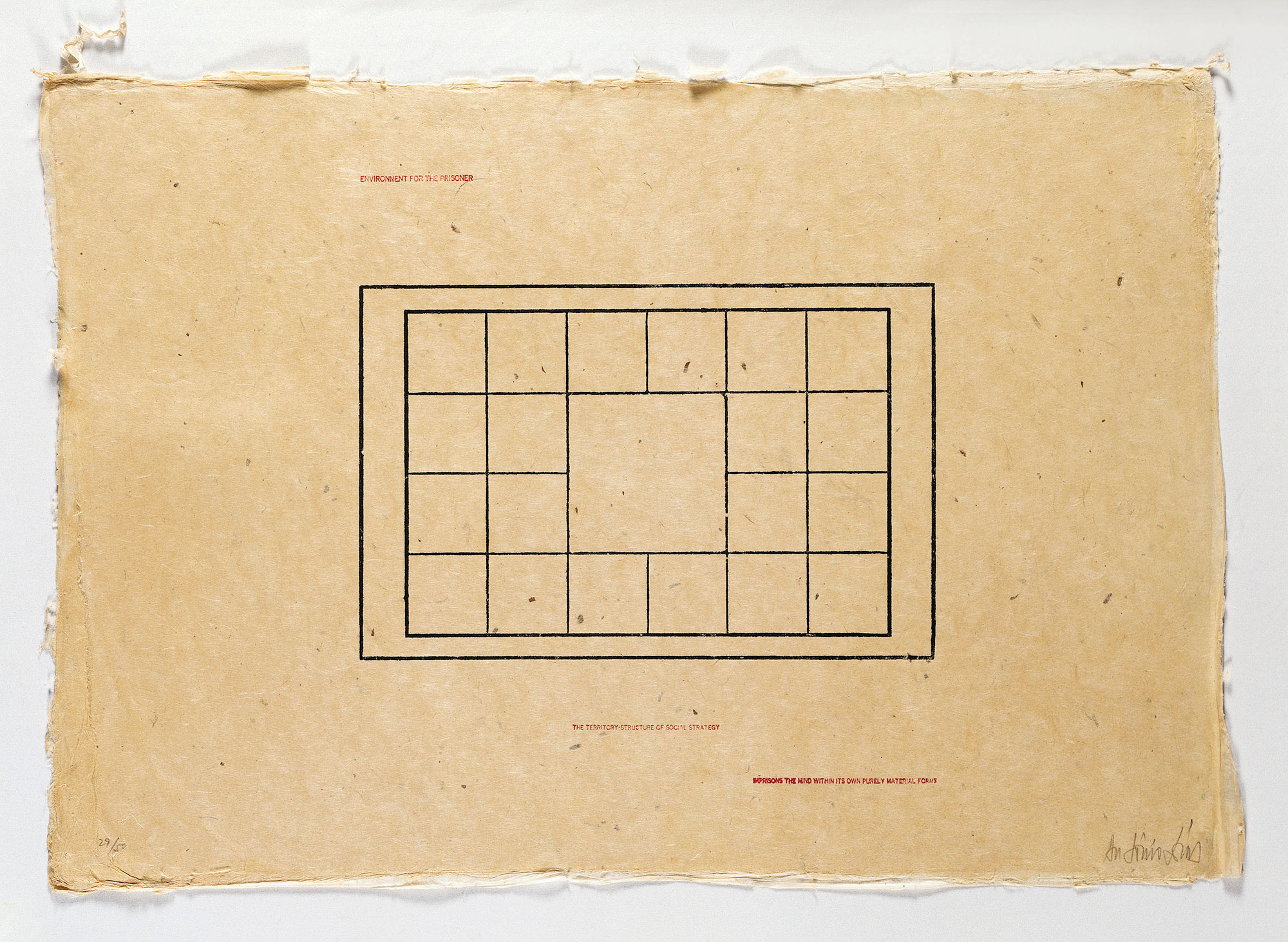
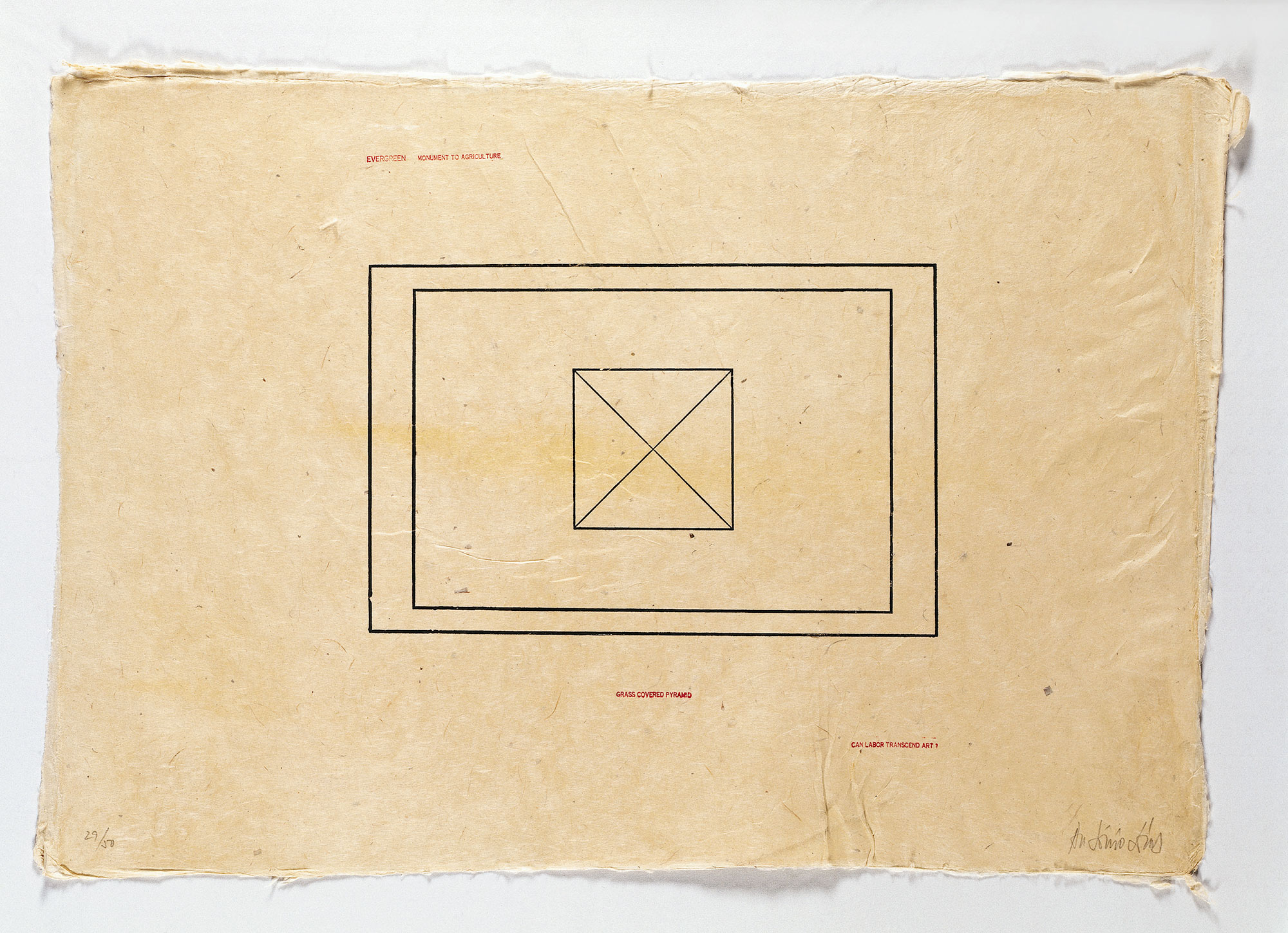
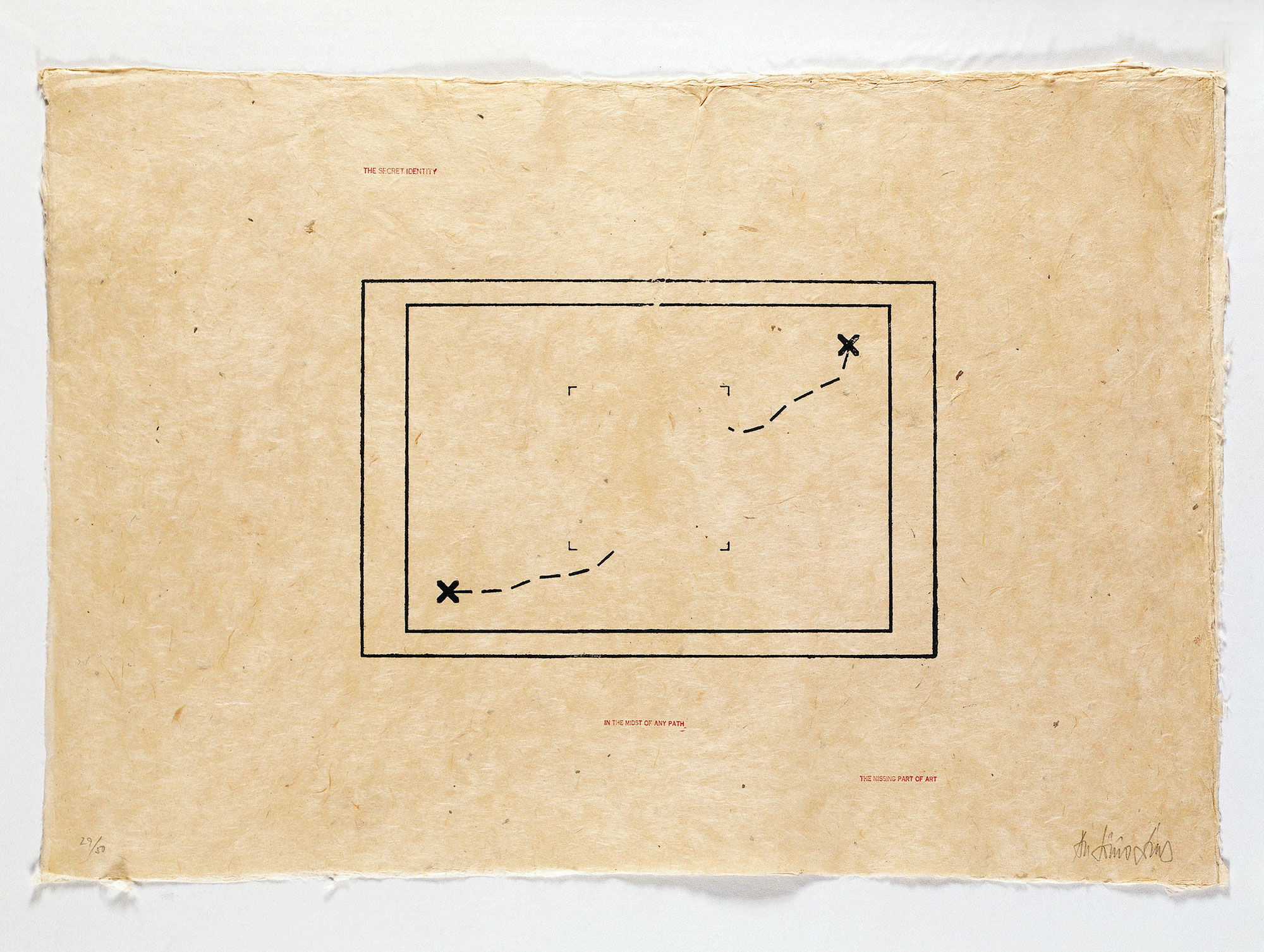
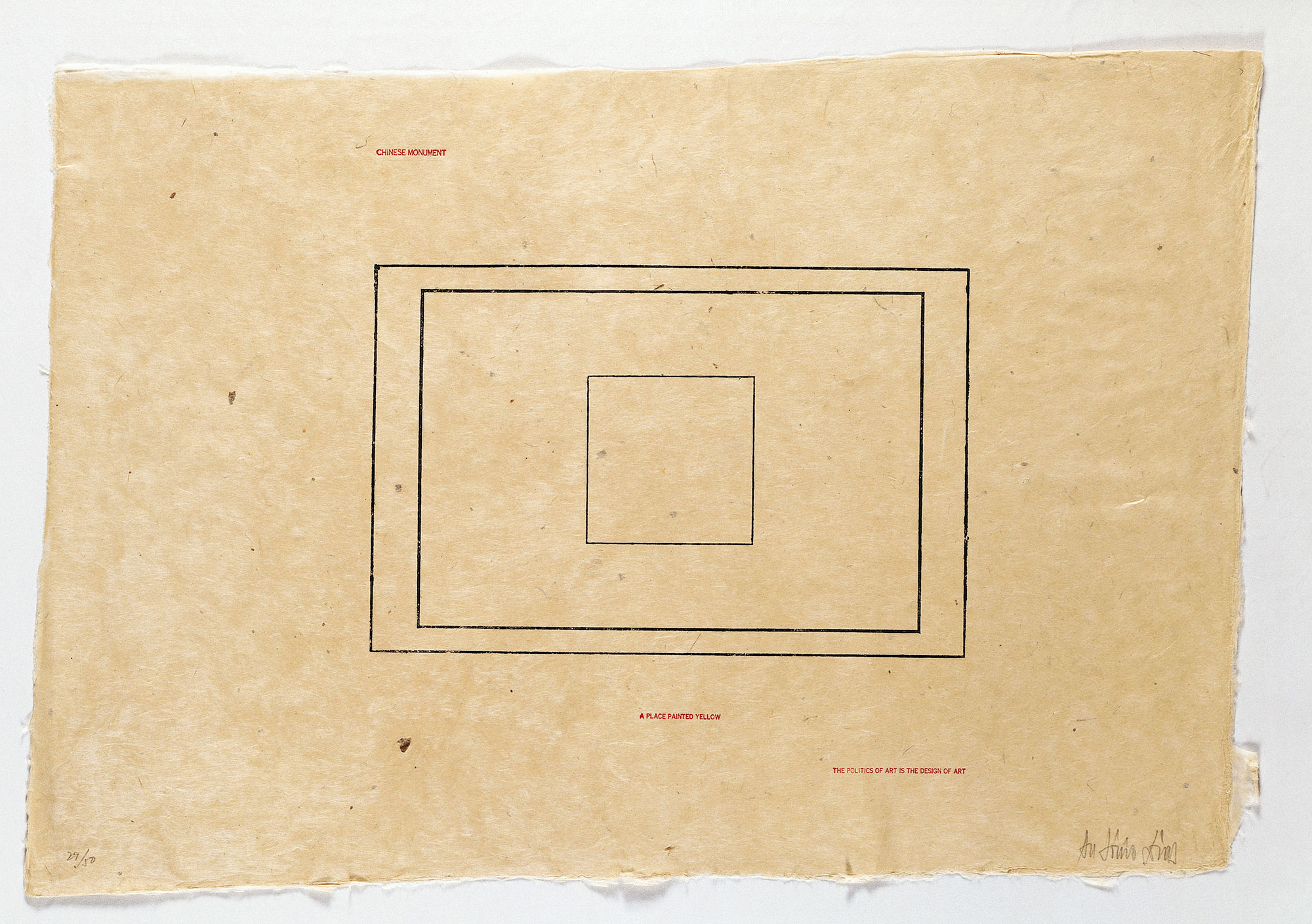
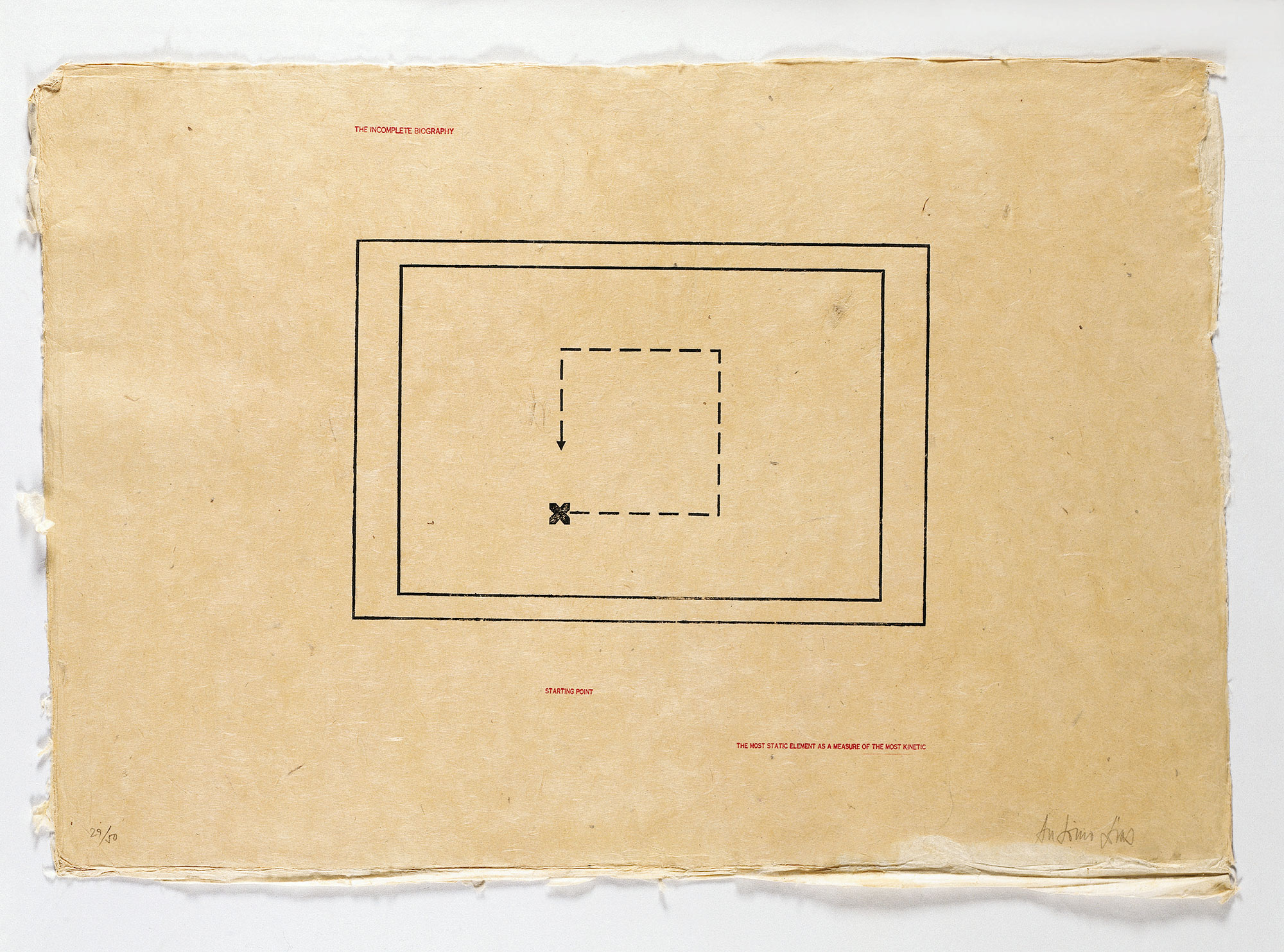
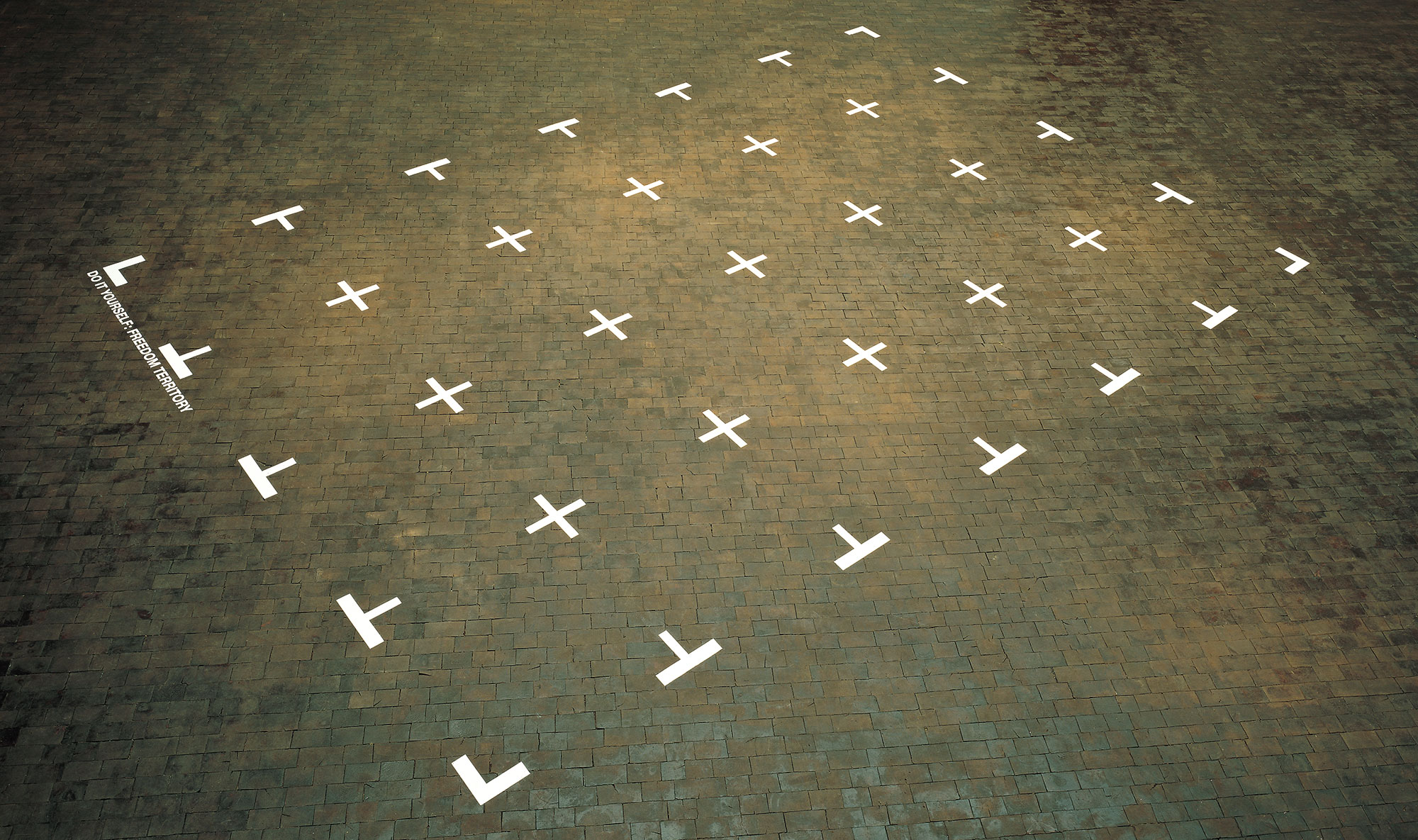
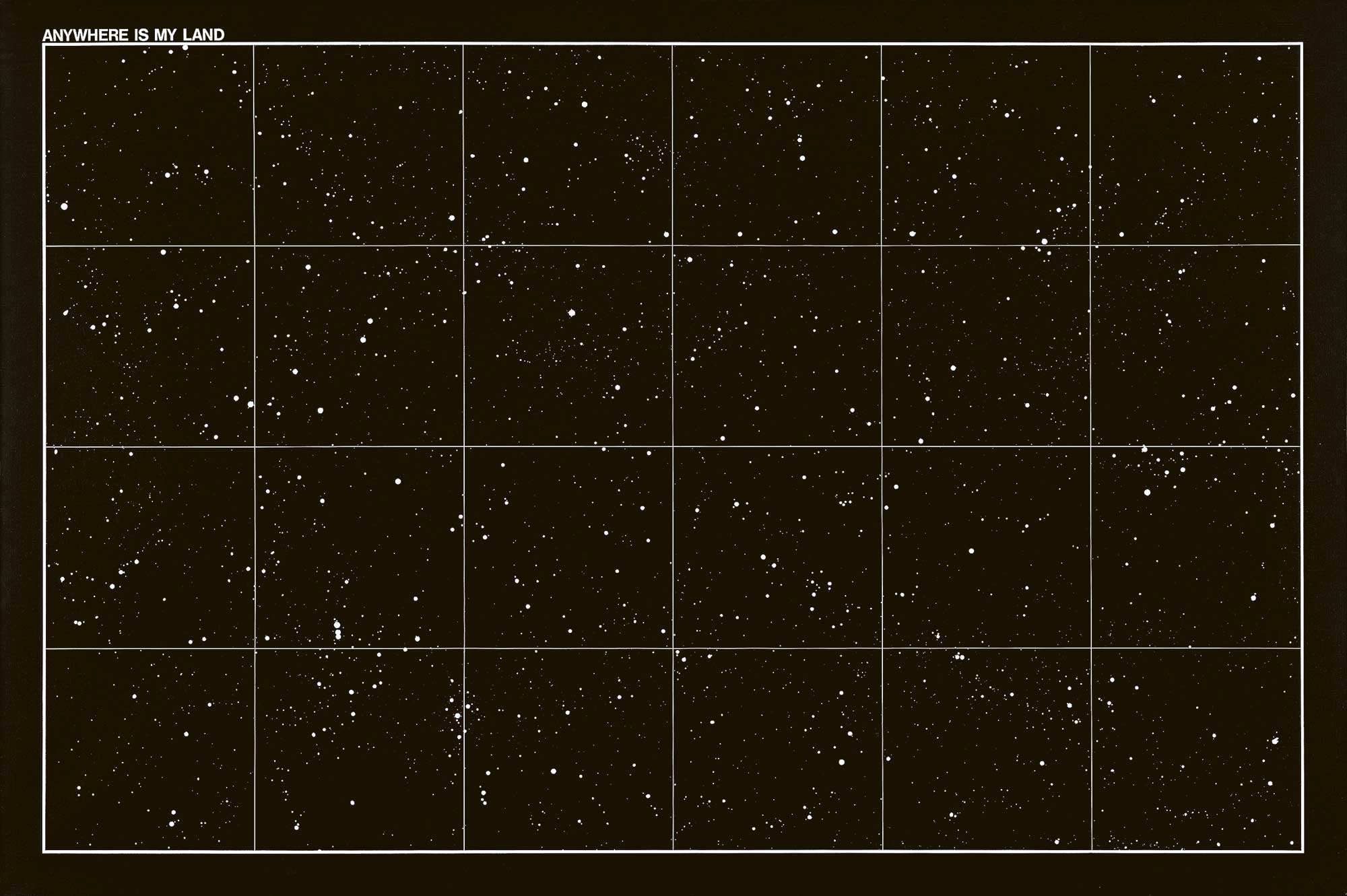
The notion of object was critically pinned onto Dias’s earlier paintings as a kind of anti-medium, a means of opening up painting to material and social reality, just as the many appendages in his paintings protruded into the space in front of them. Their “objective” status was thus opposed to what critics such as Mário Pedrosa and artists such as Hélio Oiticica regarded as the purely image-based language of Pop Art. The Italian milieu all but confirmed such skepticism: by the time Germano Celant voiced his reservations against Pop in his early Arte Povera writings, painter Michelangelo Pistoletto had already set a precedent by resisting Leo Castelli’s advances and withdrawing from the New York art world back to Turin, where he halted the production of his trademark mirror paintings and began a radically anti-stylistic series of works titled Minus Objects. What was entirely new to Dias was a kind of pressure coming from the opposite direction: according to the artist, Trini once suggested that he could simply replace Photostat (Joseph Kosuth’s favored medium) for painting without any significant loss. Dias obviously refused the suggestion, and by doing so he ultimately refused to let his earlier critique of Pop painting morph into a positivist technical determinism, stipulating that the most radical possibilities opened up by Conceptual Art could only be explored by fully embracing either the “dematerialization of art” or mass-reproducible media. In fact, the deadpan irony of a work such as Sun Photo as Self-Portrait (1968) reverses the stakes by providing a specifically painterly meditation on the nature of the medium of photography that points a finger at hubris under positivistic claims of documentary realism.
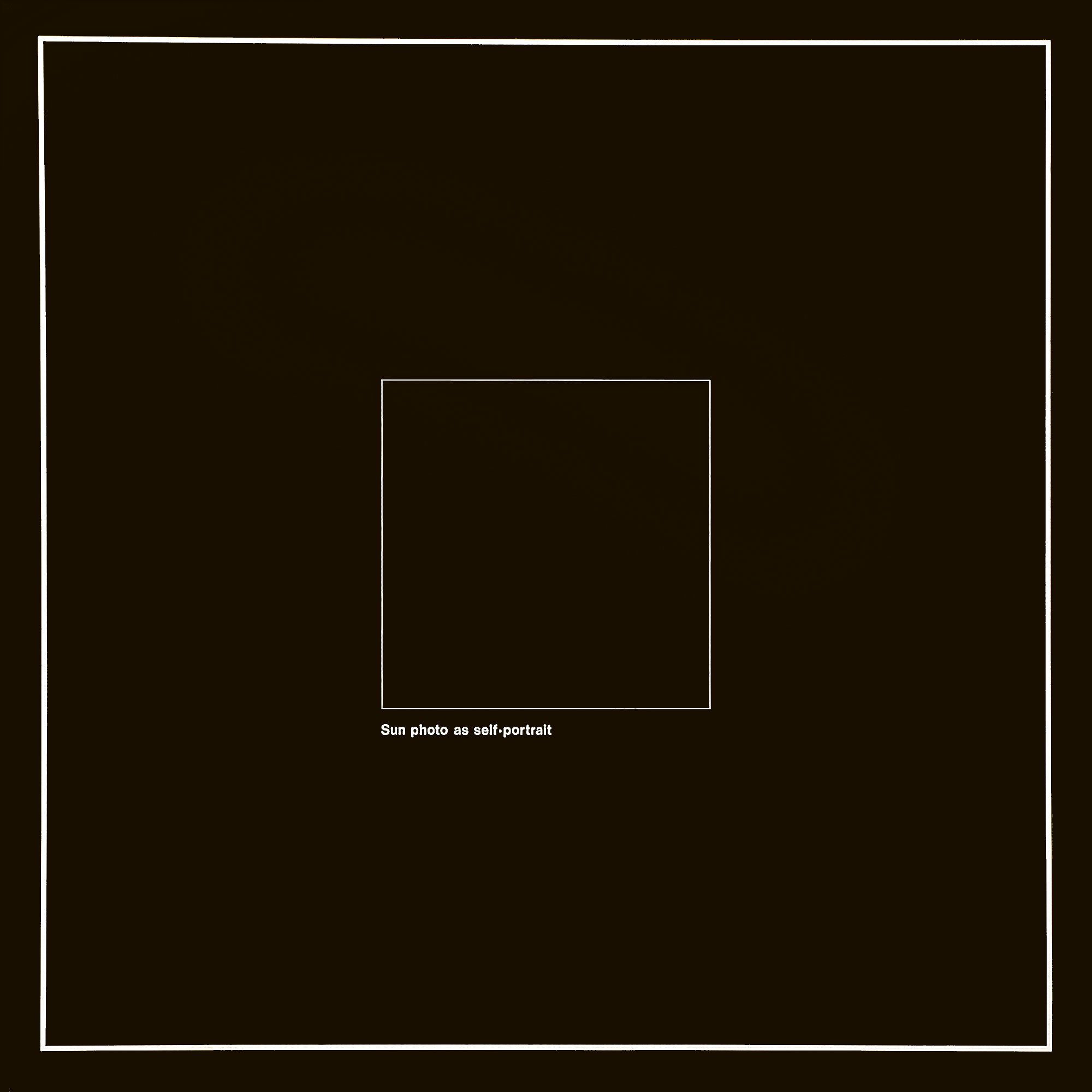
As Luciano Fabro once pointed out, the logical positivism of Conceptual Art had a truncated reception in Southern Europe, with its “tradition of cognitive philosophy in the concrete sense.”1 1 Luciano Fabro, “Entendo Shakespeare, posso até participar, mas falo como Dante, entrevista com Glória Ferreira”, in: Glória Ferreira (ed.), Luciano Fabro. Centro de Arte Hélio Oiticica, Rio de Janeiro, 1997, p. 97. (“I understand Shakespeare, I can even participate, but I speak like Dante”, English translation by Renato Rezende.) In their short-circuiting of painting, writing, photography, and the performative, Colombo’s photographs of Dias in front of Project for “The Body” are certainly a case in point. As such, they inscribe themselves in a crucial moment when the convergence of two relatively peripheral trajectories—that of Dias and the Brazilian avant-garde vis-à-vis the Western North, and that of the Italian neo-avant-garde vis-à-vis the European North—offered an alternative to Conceptual doxa with implications as yet to be fully elaborated by contemporary art history.
Sérgio B. Martins, 2017 Sérgio B. Martins is an art critic and Professor at the History Department of the Pontifícia Universidade Católica do Rio de Janeiro (PUC-Rio), Brazil.


